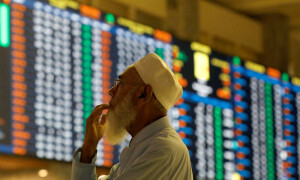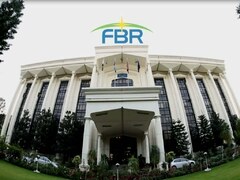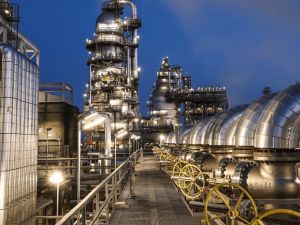China's factory deflation deepens as pandemic hits demand
- Data released last week showed China’s exports unexpectedly grew in April from a year earlier, although a sharper-than-expected decline in imports signalled weak domestic demand.
 BEIJING: China’s factory prices fell at the sharpest rate in four years in April, highlighting weakening industrial demand in the world’s second-largest economy as the coronavirus pandemic slams global growth.
BEIJING: China’s factory prices fell at the sharpest rate in four years in April, highlighting weakening industrial demand in the world’s second-largest economy as the coronavirus pandemic slams global growth.
The producer price index (PPI) fell 3.1% from a year earlier, the National Bureau of Statistics said in a statement on Tuesday, compared with a 2.6% drop tipped by a Reuters poll of analysts and a 1.5% decline in March.
Data released last week showed China’s exports unexpectedly grew in April from a year earlier, although a sharper-than-expected decline in imports signalled weak domestic demand.
China is trying to recover from its first economic contraction on record during the January-March quarter, when the economy was paralysed by curbs to slow the spread of the virus that has killed more than 4,600 people in the mainland. But the spread of the virus beyond China now threatens to push the global economy into a deep recession.
“The pace at which producer prices are falling is faster than the market expected, which calls for more forceful measures to spur demand,” said Wen Bin, Senior Economist at Minsheng Bank in Beijing.
Capital Economics Senior China Economist Julian Evans-Pritchard said demand-side pressures are likely to persist for some time with tumbling energy and food prices bringing headline gauges lower.
“That should remove any concerns the People’s Bank of China has about the impact of monetary easing on inflation,” Evans-Pritchard said.
“If anything, lower inflation will increase real interest rates and strengthen the case for further rate cuts.”
The coronavirus pandemic, which has infected more than 4 million and killed about 280,000 globally, has paralysed world demand and sent many economies into deflation as factories and retailers shut their doors.
China’s statistics bureau said the producer price declines were driven by a slump in global crude oil and commodities prices. Nearly 60% of the deflation came from fuel extraction and processing and chemical manufacturing.
Among the 40 major industrial sectors surveyed, oil and gas extraction reported the largest year-on-year price fall of 51.4%, steepening from a 21.7% drop in the previous month.
Chinese manufacturers have been hit by a plunge in overseas orders and face rising inventories and falling profits, while many have let workers go to cut costs.
As China’s central bank ramped up economic support, banks extended 1.7 trillion yuan ($240.05 billion) in new yuan loans in April, significantly more than a year earlier, while growth of broad money supply also quickened.
Governments remain wary about the risks of a second wave of infections, even as some slowing in the outbreak allows many countries to gradually lift restrictions on social distancing and restart their economies.
China’s consumer price index (CPI) rose 3.3% from a year earlier, slower than a 3.7% rise tipped by a Reuters poll of analysts and a 4.3% increase in March.
That was largely due to slowing food price growth, which rose over 18% in March. But it still rose 14.8% last month, led by a 96.9% jump in pork prices. Non-food prices rose 0.4% in April, the data showed.
Core inflation - which excludes food and energy prices - remained benign last month at 1.1%?down from 1.2% in March.
Analysts expect further monetary easing soon, although Beijing is likely to rely on fiscal stimulus to cushion growth.
























Comments
Comments are closed.